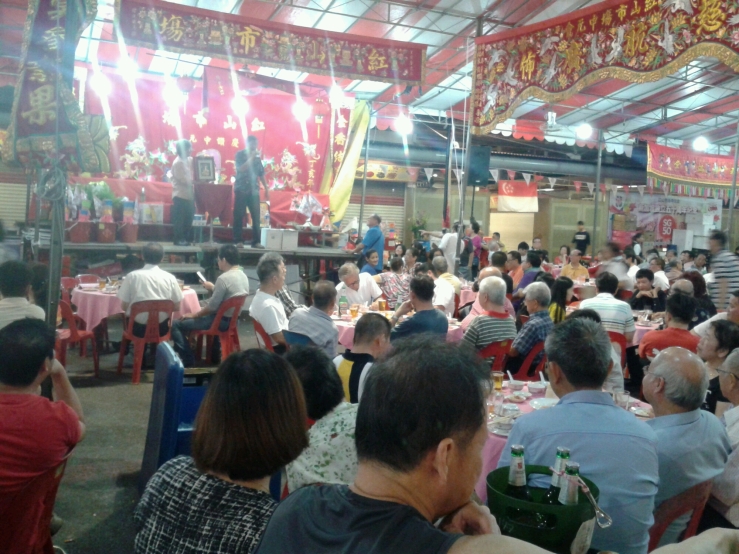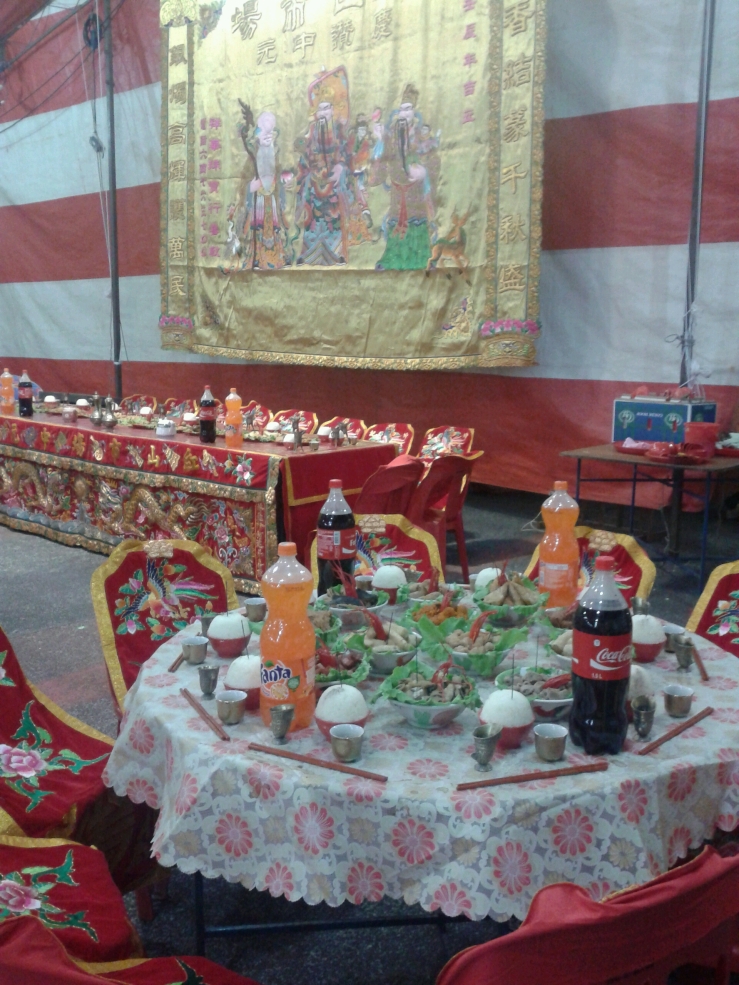I’m guessing some foreign readers had their interest piqued by my mention of the Seventh Month in the previous post – quite a number of clicks for the wikipedia link!
You may be interested to see how it is celebrated then. (I’ll admit, I don’t know much – a lot of it are just practices I observe year after year without understanding the symbolism behind.)
There’s usually entertainment put up for the visiting souls – the traditional one being Teochew street opera on make-shift stages.
When there are seats laid out, the first row would be left empty for the ‘good brothers’. In this case, no seats were laid out, but there were decorated joss candles (sustenance for the spirits) and offerings being burnt.
There would be a big (again, make-shift) altar for deity worship –
The gods depicted on the banner are FuLuShou – Prosperity, Status and Longevity. This particular ceremony was organised by the Redhill Market association. The evening would begin with prayer and invocation of the spirits for their blessing and continued support, thereafter the hawkers gather for dinner and a very noisy auction of auspicious objects.
Those objects would have been blessed earlier at the altar and include things like deity statuettes made of gold and pots of blessed rice that you can choose to display or cook. The proceeds from the auction will go toward funding entertainment like the street opera and getai (lit. song stage) for next year’s seventh month.
While the living enjoy their food, nobody forgets about the invisible guests. Dinner is set aside for them too –
Note the joss sticks sticking out of the rice bowls. This is why we Chinese, no matter what religion we may subscribe to, think it rude (some say inauspicious) to stick chopsticks into rice bowls. It is customary to lay them flat on the rim of the bowl.
Hope you enjoyed this slice of old Singapore, with rituals that have since died out in China under communist rule.



